Sunday was a whirlwind day for me. As I noted previously, the annual pilgrimage to the largest sporting show on earth occurs in early February (this year anyway). And in my case, I make it a one-day trip. I leave Paris early in the morning on the roughly 1-hour flight to Munich and then return later that same night. All of which allows me to pack in a day at ISPO.
This year they’ve continued consolidating the sports tech/wearables vendors into a single hall – making my life much easier. Many of the other halls are focused on things like clothing or ski equipment. And while there are the odd ducks in those halls I still visit, I’m mostly able to cruise through them.
As I noted last week, ISPO doesn’t tend to see too many major announcements from this sector (i.e. new Garmin or GoPro devices). Instead, we see more startup activity, as well as minor updates. While Garmin, Polar, and TomTom all had major booths – notably absent was Suunto. Neither present as a standalone booth or in the Salomon booth. Also, Fitbit canceled in the days leading up to it, and GoPro didn’t return either. Both companies that have had substantial layoffs recently.
KuaiFit Sport Headphones:
We’ll start off with a quickie of an update. I’ve discussed Kuai previously, last year at ISPO in fact. The company makes headphones that can measure everything from heart rate to pace, all while storing fitness data as well as music. Here’s the bulleted list of features:
– In-ear heart rate (HR) sensor made by Valencell
– Works in swim/bike/run
– Ability to broadcast your HR over both ANT+ & Bluetooth Smart
– Ability to broadcast your running pace/cadence over both ANT+ & Bluetooth Smart
– Can connect to ANT+ Power, ANT+ Speed/Cadence sensors during cycling
– 3-meter deep waterproofing (though, it’s also internally nano-coated just in case the outer shell has issues)
– 5-meter deep waterproofing on the internally waterproofed micro-USB charging port
– Saves activity files as standard .FIT (standard format everyone uses, for swim/bike/run)
– 8GB of music storage internally
Effectively, they’re what every athlete wants in a pair of headphones, or close to it anyway.
They transmit out your stats as standard ANT+ & Bluetooth Smart, and in fact, I was given a demo of that exact scenario – where I was shown the unit transmitting to both a Garmin watch and an iPhone concurrently. This means you can use it as a footpod or heart rate strap, as well as recording the data internally. But again, I covered all those details previously.
So in the interest of keeping the tempo quick on this post, the update is that they’re planning to start manufacturing in a few weeks, with them essentially waiting on the Chinese New Year closures to wrap up so they can move forward. In turn, that has them shipping in the March timeframe.
Obviously, this is a wee bit behind numerous other past timeframes they’ve listed – so hopefully this one will stick. If the product is as good as they’ve been talking, it could gain some serious traction with the endurance sports realm. I’ll likely circle back later this spring once I have a unit to see how it handles.
Coros Smart Helmet:
Many of you may remember my in-depth review of the Coros helmet back this past fall. It’s what appears to be a regular helmet from the outside, but actually uses jawbone induction to play music from your phone (without blocking the sounds of traffic), and even allow you to take telephone calls. It works surprisingly well.
Interestingly enough, I noticed they were playing my YouTube video about it in the booth (see pic above). This video below:

In any event, the update here is that they’re going into retail. I met them at CES, and they noted the same, but now there’s a bit more clarity on it. Since the campaign wrapped up this past fall, they’ve shipped out all units to all backers. They say that the only ones that haven’t received units are those that haven’t completed their shipping surveys (a standard part of the Kickstarter process), or did so late. That seems to roughly jibe with the comments section of my review.
On the retail side, they’re working to get onboard with both US and European retailers, and have recently launched their own site for purchasing. Interestingly, I didn’t know previously that Coros is actually a subsidiary/brand of electronics giant YF Tech, which is the largest GPS manufacturer in China. However, Coros is run entirely out of the US – with its US headquarters now located in Woodbridge, VA (an area most notable to many Washington DC area folks as one of their nearest Ikea store locales).
Finally – some of you have asked recently about my Coros helmet. Indeed, it’s a project/product I paid for on Kickstarter, and thus it’s become my main helmet. I don’t actually tend to use the music bit that much, but rather just find it’s a nice enough helmet. My previous helmet was getting a bit rough looking, so this fit the bill nicely.
Salming RunLAB:
While there’s plenty of products out there lately doing running efficiency analysis – none seem to go as deep or expensive as this booth’s wares. The Qualisys/Salming platform will set you back about 50,000 EUR (about $53,500 USD), or roughly the cost of three Ironman race entries these days.
The platform is actually a partnership between Qualisys and Salming, and is designed to capture and analyze running form. The target market here is coaches and pro athlete centers (like Olympic training facilities), more so than the average consumer. They even see some running stores being a potential customer.
The system works by using 9 cameras to monitor 35 markers that are placed on your body. These markers are the small silver balls you see.
In addition to the 9 sensing cameras, there’s also one additional camera for recording regular video. The platform in turn measures step length, movement of trunk and pelvis, and numerous other metrics around running form.
From there the platform allows a coach to study any of the markers in more depth (or slow-mo), or to simply spit out a full report to the customer/client. That report then compares the results against elite runners, showing where things differ.
As noted above, the whole kit costs about 50K if purchased, though it can also be bought/rented in three different models. The first choice is a leasing plan (thus not the full 50K cost), the second being an upfront purchase, and the third being a three-year payment plan for the full cost. Somehow, I don’t quite think you’ll find one in the DCR Cave anytime soon. Still, it’s interesting stuff for sure.
Digitsole Run Profiler:
Continuing the running metrics trend, we’ve got Digitsole. This company makes two different connected insoles. In Matrix style, there’s the red one…and the blue one. No really, I’m not kidding.
The blue one (Run Profiler) starts off at 99EUR (for one side) and provides relatively straightforward stats like cadence and pace. But it also gets into displaying how much pressure is being applied to different parts of the insole. All of this data is transmitted via Bluetooth Smart to their smartphone app (Android/iOS).
The unit charges via micro-USB on the side of the insole and gets about 5 hours of active-on battery life. The company said the goal was to be able to cover a marathon for the majority of runners.
Now as mentioned, they also have the red pill insole, which costs 199EUR and is called the ‘Warm Series.’ That one is super nifty though in that it actually provides heat. Yes, it’ll actually heat your shoe. It can do so to a temperature range of 30 to 45 °C (86 to 113°F). Not too shabby!
The heating version lasts about 3-9 hours, depending on whether it’s turned on full blast or not. Oh, and last but not least – they’re working on a shoe that can actually adjust the density of the insole material in real-time, which they plan to sell for about 249EUR. Though, that one will lack the heater option. But it effectively allows you to get a more or less cushioned shoe on the fly. No timeframe for that yet though.
LG’s Smart Shoe Sensor:
Not to be outdone in this post, LG also had a smart insole on the show floor. Their unit is targeted more at general fitness, but does capture information like balance, stride length, angle, and balance.
The system works in a pod-like design, which fits into the bottom of a shoe. All of which is powered by a coin cell battery that apparently gets about 6 months of battery life. The company also says it’s been tested at 100kg of weight, and through 500,000 repetitions. Oh, and they’ve got an API available for developers to tap into.
Now unlike the others, this product isn’t actually a product. Rather, it’s a business-to-business offering that they’re hoping someone else will license and use within their platform. That’s probably a good thing though – because quite frankly some of the terminology is a bit cringe-worthy. For example, they’ve included ‘power’ on some running screens that were actually showing running cadence.
And that ignores the use of ‘Athleisure Lady’ and ‘Soccer Mom’ terms. I’m serious:
Or the headline of ‘Sensation Beyond Generality’. Which basically sounds like the tag line for a condom brand.
Now my bet here is that the underlying tech is probably pretty interesting. It’s just that somewhere on the flight between South Korea and Germany, the marketing team got a hold of things and applied a healthy dose of crazy-pants. Or, crazy shoes. Either way, we’ll have to wait for another company to pick it up to see how it fares in real life.
Casio’s Smartwatch Action Cam Linkup:
Back at CES last month I showed you the new Casio hiking-focused Android Wear GPS watch, the WSD-F20. It builds on last year’s model that was focused at a similar hiking/backcountry crowd. You’ll want to check out all the details from last month’s post for the specs on the watch.
What I was interested in here at ISPO was the action cam integration. Casio sells an action cam (EX-FR10/FR100CA) that can integrate with the watch. Sure, companies like Garmin allow you to control your VIRB action cam from a Garmin watch, as does GoPro with the Apple Watch. But Casio takes it a (ginormous) step further: You can preview the video on the watch.
They talked about this at CES, but only had paper displays to show how it’d work. And I never trust marketing, especially paper marketing. But here at ISPO, I managed to con convince one of the folks to demonstrate it for me, and even allow me to film a video on it.
So, here’s that video. It’s short and sweet, and works mind-bogglingly well.

The connection is actually over legacy Bluetooth (not Bluetooth Smart), which gives a bit more bandwidth than Bluetooth Smart. It’s not WiFi like most action cam previews would be. I’ll be honest, I didn’t expect it to work nearly as well as it did. The lag was virtually non-existent, and the clarity was far better than I was expecting. Heck, the ability to check recorded photos and videos is pretty sweet.
The only downside? The Casio action cam itself has pretty limited specs compared to anything else on the market (and seemingly tough to even find a place to buy it). Still, the connectivity piece shown above is crazy cool. And it’s ideal for previewing the position of the camera on a helmet in winter, where a cell phone touchscreen can be messy with heavy gloves in the snow.
Kettler’s Smart Trainer App & VR Demo:
Indoor gym and indoor bike equipment Kettler was there to show off their new training app platform that integrates with their indoor cycling bikes. Additionally, they demoed a new VR platform as well. But first up is their new app: Kett Maps.
This platform includes 6,000 outside course videos, and is powered by Kinomap (the popular cycling training app). It allows you to ride outdoor routes while indoors on the bike, which will change the resistance automatically to match the grade/incline on the recorded video. Note that a typical indoor bike of theirs will run about 2,000EUR.
The app itself will cost you 5EUR a month, which is pretty reasonable. However, they’re also offering a free version which has a rotating set of free videos each month. They’re partnering with pro cyclist Thibaut Pinot who will be riding some Paris-Nice course stages and filming them for their platform, allowing you to effectively ride with him.
Next, we’ve got their VR platform, which they partnered with Gymcraft on. This platform drops you into a 3D world, not unlike Zwift. It’s cycling focused, and you’ll don an Oculus headset to get that 3D VR feelin’. The app then connects with any of the Kettler indoor bikes (including recumbent ones), along with an XBox controller for changing the direction of where you go and controlling shifting. It works surprisingly well.
In fact, I’d say it works too well.
See, it took approximately 35 seconds for me to want to barf on a route that took me flying off jumps and rolling down hills. I’m not one who easily gets motion sickness (even in rough seas or the most severe mountain roads), but this was over the top. For example, when I tried Zwift VR with the same headset, I had no issues riding for quite some time with it from a sickness standpoint. But with the jumps and such in the Kettler system, not only myself but others around me that tried it had the same feeling.
In some ways, it’s good that they aren’t targeting the home user directly here. Sure, if you want to try it out at home and have the hardware to do so, it’ll only set you back 5-10EUR a month (still finalizing that). But their real aim is actually the corporate setting. They want companies to place the setup in break rooms, and then have people jump on the bike for a few minutes rather than a smoke break. That setup, including the bike and everything you see, will run about 10,000EUR.
While I have no doubt VR will be the future of indoor cycling, I’m not entirely sure this particular software implementation is that future. Still, it’s great to see companies experimenting with it and pushing the boundaries of what’s possible.
Bonx Grip Wireless Group Chat System:
Next, we’ve got a pretty cool wireless chat system for group rides, or any sort of group activity, from Bonx. It looks like a simple Bluetooth wireless headset, and in many ways it is. However, the real key is the app behind it. That app acts somewhat like Skype and creates a real-time group audio conversation for your friends – all without hitting your voice plan minutes. Instead, it’s using your data in an optimized manner (or, so they say anyway).
The unit has two modes: One mode instantly transmits all conversation from you to your group, just like if you had left your phone connected during a call. And the other mode requires a press on the earpiece to transmit (like a walkie-talkie). This is perfect in that for some situations you just want hands-free conversation, yet for others you may want to talk behind their back. Or something less sinister.
What’s most impressive on the hardware side is the battery life. It gets 7 hours of talk time, but gets 400 hours of idle time. The talk time is only when it’s actively transmitting speech. So that’s pretty damn solid. That easily lasts a weekend or more of skiing all day for example. Oh – and the unit also can be used to play back music as well, though that cuts into the battery life.
The unit has wind reduction, which they say can handle up to 40MPH of wind noise (something that IMHO would require a bit of testing to believe). Still, even if it did half of that speed, that’d cover most scenarios.
Now the only downside is the price. The project initially launched on Kickstarter a long while back, but now they’ve moved into retail and its coming in at $139USD and 139EUR. For me, that’s a pretty steep price to pay. I get that some of that cost is likely going to funding the online platform and data costs they incur in running that platform (since there is no service fee). But if I were looking at convincing friends for a ski trip to buy one, that’d be a near impossible pitch, even more so if each couple needed two of them. Whereas if it was priced in the $50-$70 range, with a low monthly fee, that’d be a much easier pitch for a week-long ski trip. Just my two cents.
Garmin Fenix 5 Charging Cable:
There’s been a bunch of chatter and questions about the Garmin Fenix 5 and the charging cable. Specifically around charging while recording, and notably about doing so while attached to your wrist (or not). So I grabbed a Fenix 5 unit from the booth along with a charger and slapped together this quick video explaining it all and even using the darn thing as a lasso to demonstrate how well (or not) the charging cable might hold.

As I said, just a super quick demo – nothing fancy. But a demo I’ve been wanting to film for quite some time.
Wiral Action Cable Cam System:
Last but not least for this post I’ve got this new cable cam system from a startup called Wiral. For those unfamiliar, a cable cam means that you’ve got a camera on a cable. That camera is usually controlled by you remotely, and usually costs a crap-ton. This, however, doesn’t cost a crap-ton. At least compared to professional rigs.
The system includes a piece of rope (currently 100m long, but they may go for a longer piece), a motorized moving tripod, and a controller. The controller tells the moving portion the speed to go, as well as which direction to travel along the rope. The idea being that you’d set it up between two trees in the woods, filming jumps or mountain bike runs through the woods. These would typically be used where drone shots couldn’t go, either for safety or maneuverability reasons.
In fact, many shots you’ll see in winter sports along shorter-course ski/snowboard events are done via cable cam setups to minimize risk to spectators and athletes.
The action camera is then connected to the bottom of the rolling unit. The unit can hold a weight of between 1-2kg (still being finalized), which is more than enough for a GoPro. It actually gets into the range of small cameras, like a Sony mirrorless camera. And that’s where the potential gets even cooler.
The mount includes both a 1/4” standard tripod adapter, as well as a GoPro adapter. The battery life will run about 1-4 hours of active use, depending on whether it’s on flat terrain or steeper inclines. Also, it’s fully collapsible, and folds up, for easy transports (in total it weighs less than 500g).
What’s interesting on the remote though is that you can record the speed/control of the movement of the camera mount. So let’s say you were filming skiers going off a jump in the woods, you could control the camera on the first go, and then repeat that automatically for every subsequent attempt. Further, with the weight limit being 1-2KG, that’s more than enough to add in a gimbal for most action cameras.
The unit will launch on Kickstarter in April, with availability in August. The launch price on Kickstarter is planned to be about $200, whereas the retail price afterwards will be $400. I think $200 is quite fair, but I think they’ll find very few buyers at $400 unless the weight limit is enough for both a gimbal and a mirrorless DSLR with lens (so it’d appeal to the prosumer crowd). There’s a big difference there between 1KG and 2KG.
In any case – super cool.
Staaker:
Finally, tomorrow I’ve got a separate post coming up on the Staaker action sports drone that I got a hands-on demo of. That’s requiring a bit more video editing to pull together the multiple cameras and mics I was using for the demo. Even more so since my GoPro Hero5 Black had an SD card error about 2/3rds the way through the flight (first time ever), resulting in the remainder of that footage being lost. That sucks not only for lost footage, but because when we went to re-shoot those segments, the drone then stopped working. Basically, I was killing everything. All of which means even more editing to make the video semi-functional. So hang tight for that tomorrow!
Thanks for reading!
FOUND THIS POST USEFUL? SUPPORT THE SITE!
Hopefully, you found this post useful. The website is really a labor of love, so please consider becoming a DC RAINMAKER Supporter. This gets you an ad-free experience, and access to our (mostly) bi-monthly behind-the-scenes video series of “Shed Talkin’”.
Support DCRainMaker - Shop on Amazon
Otherwise, perhaps consider using the below link if shopping on Amazon. As an Amazon Associate, I earn from qualifying purchases. It doesn’t cost you anything extra, but your purchases help support this website a lot. It could simply be buying toilet paper, or this pizza oven we use and love.



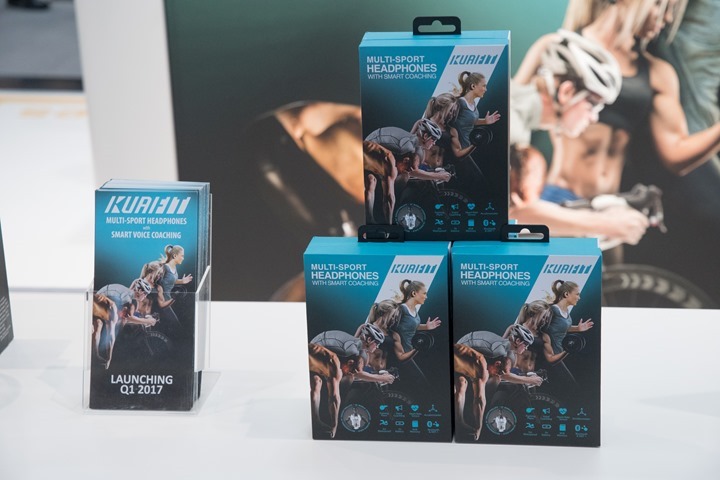
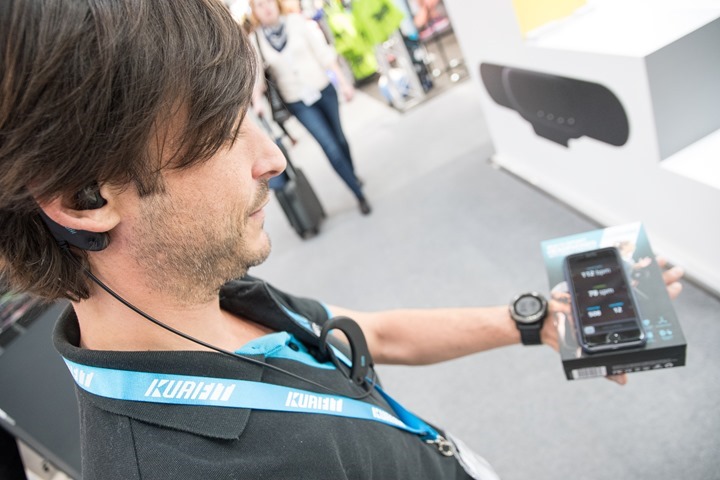
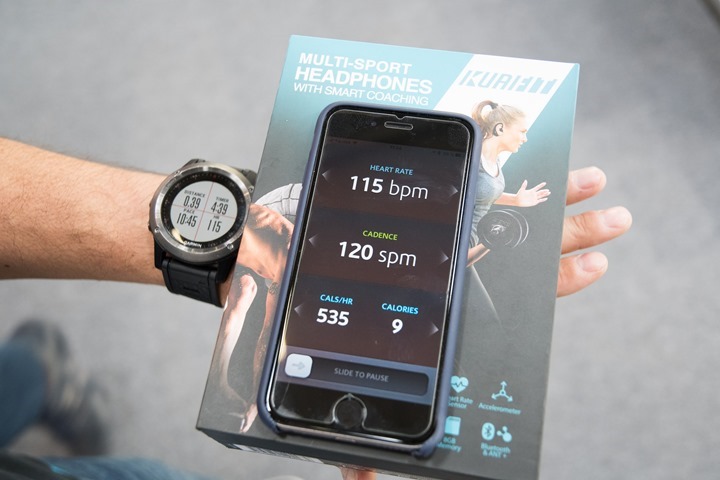

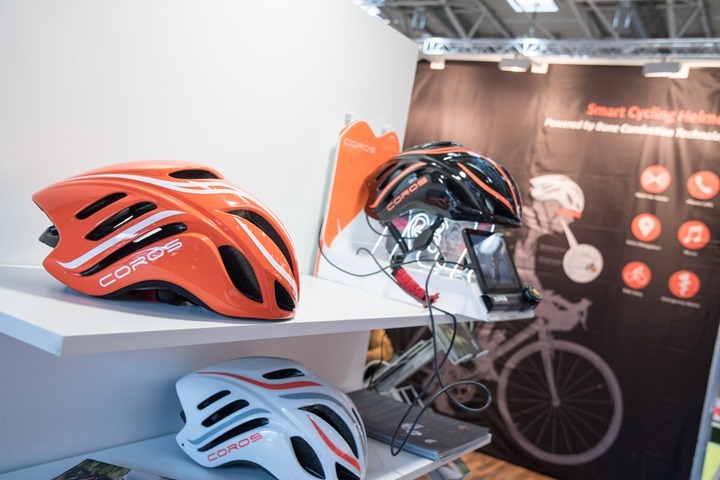
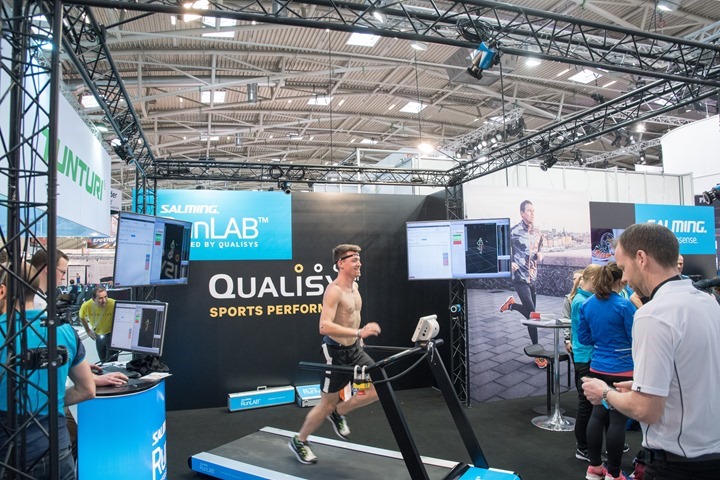
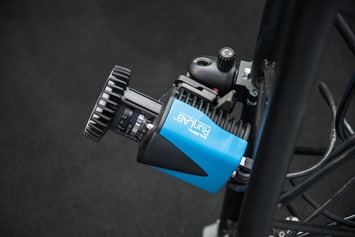
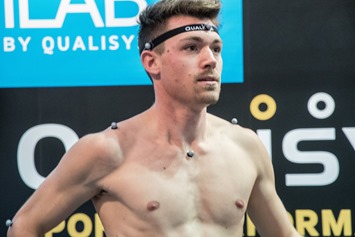
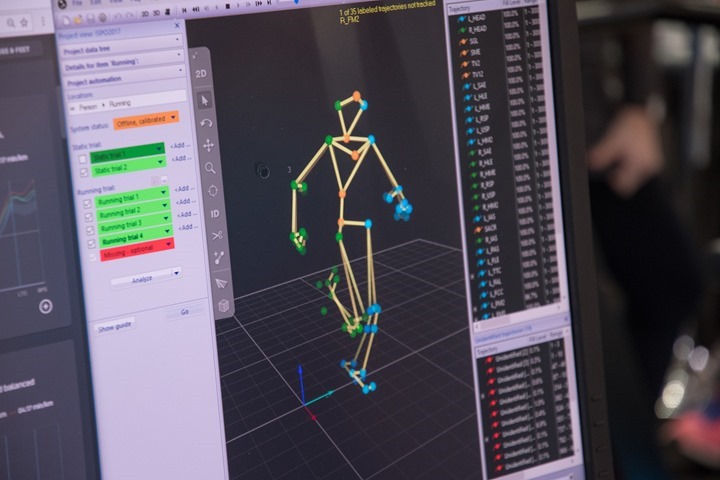
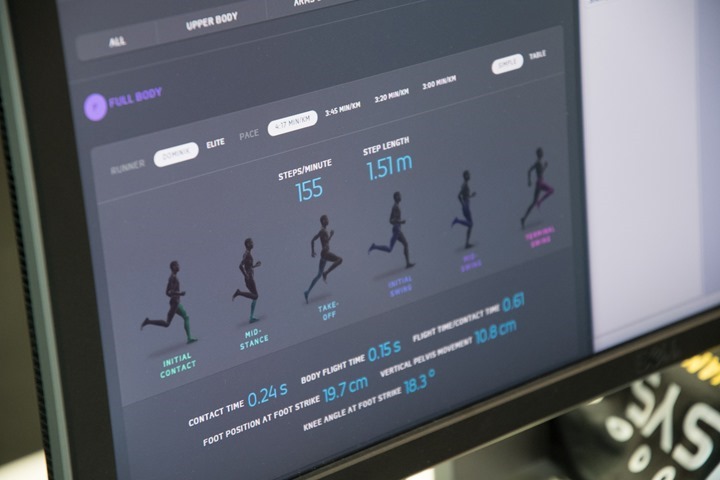

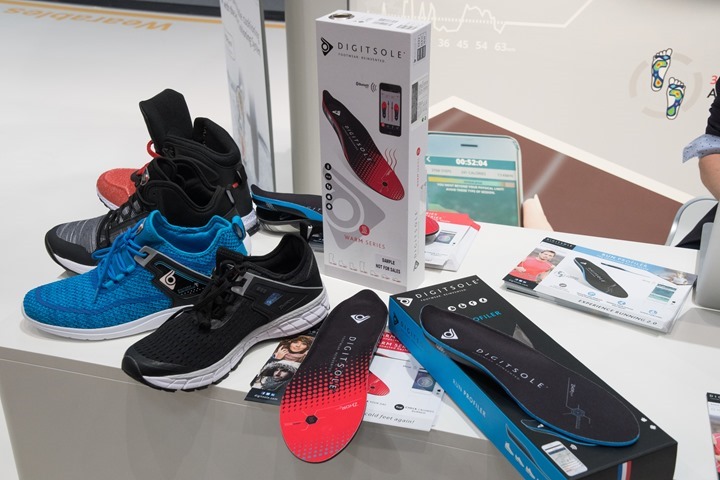
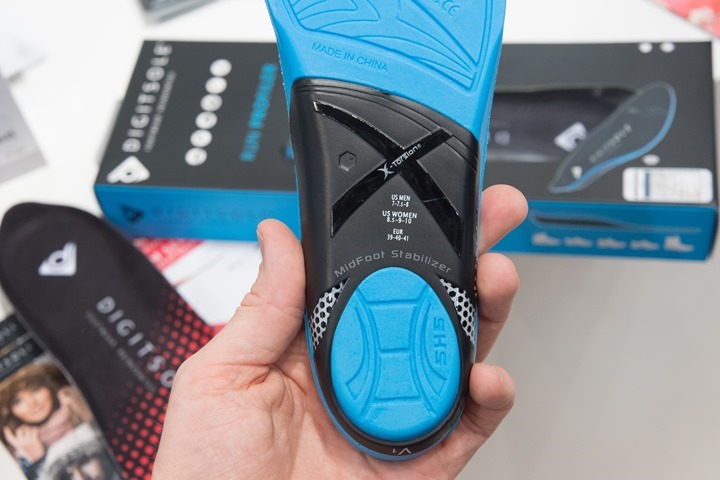
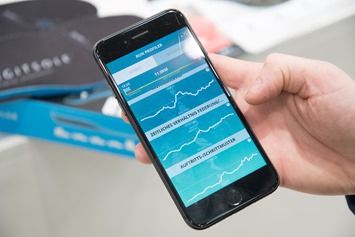
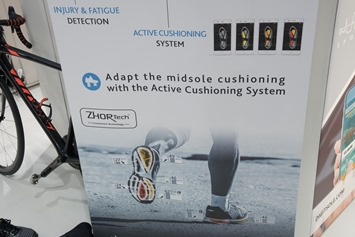
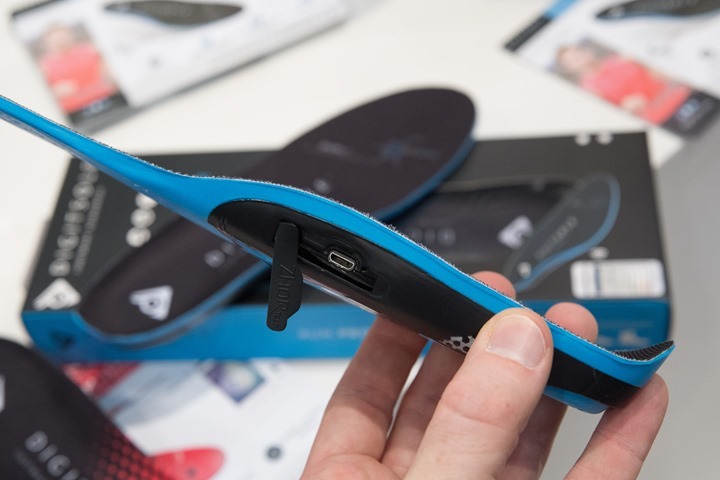
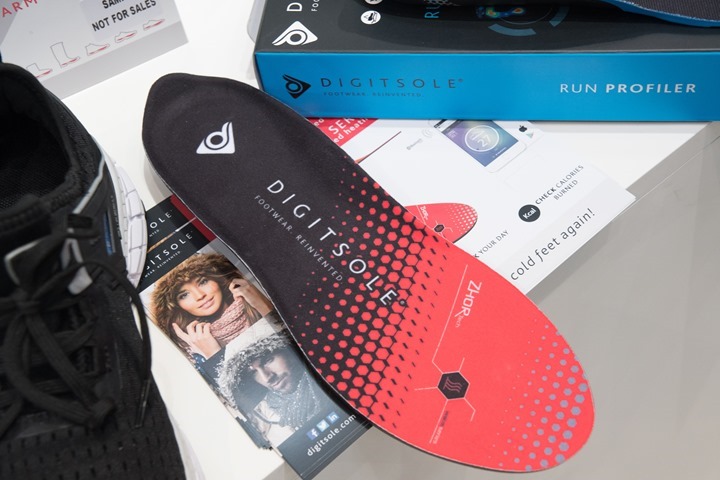
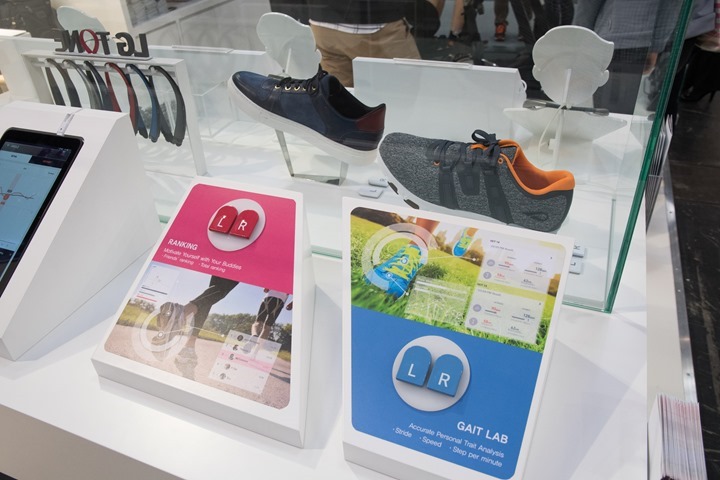
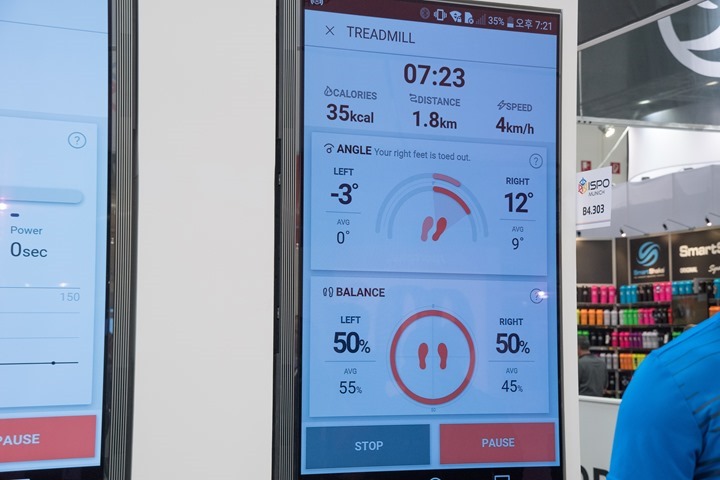
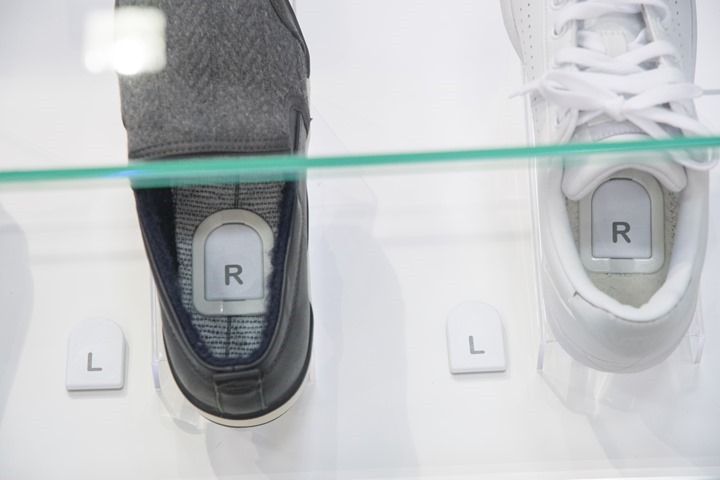
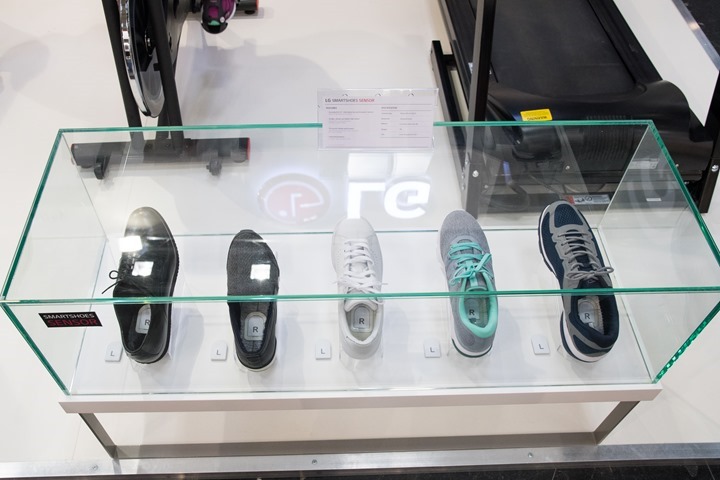
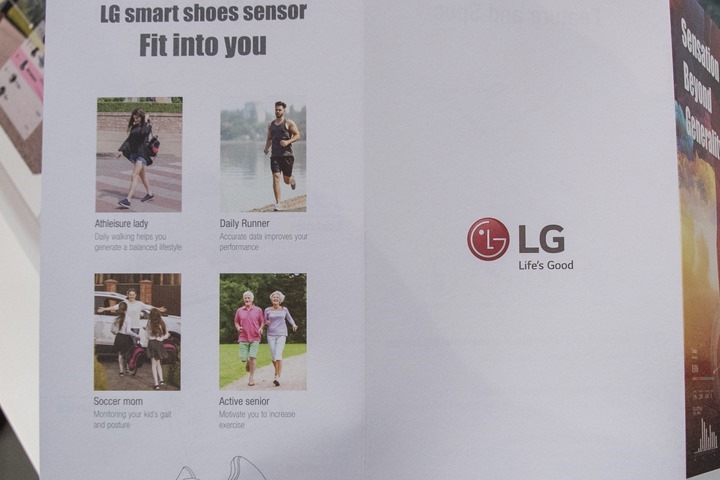
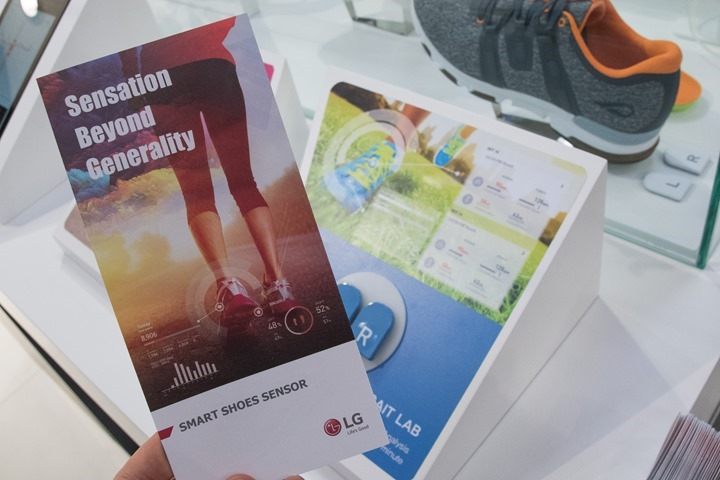

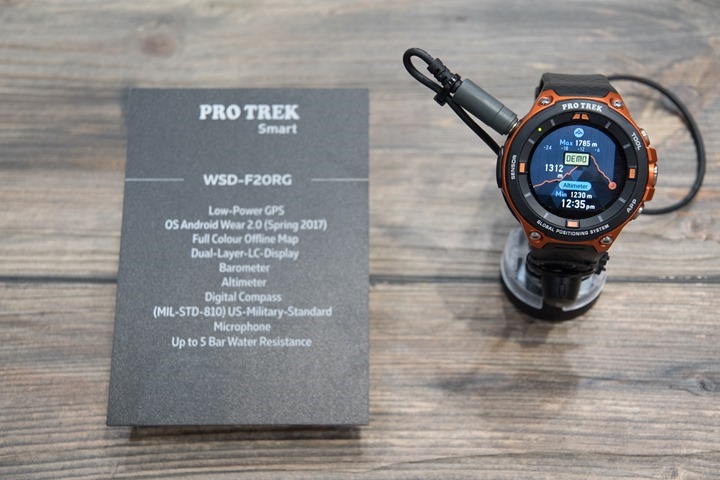
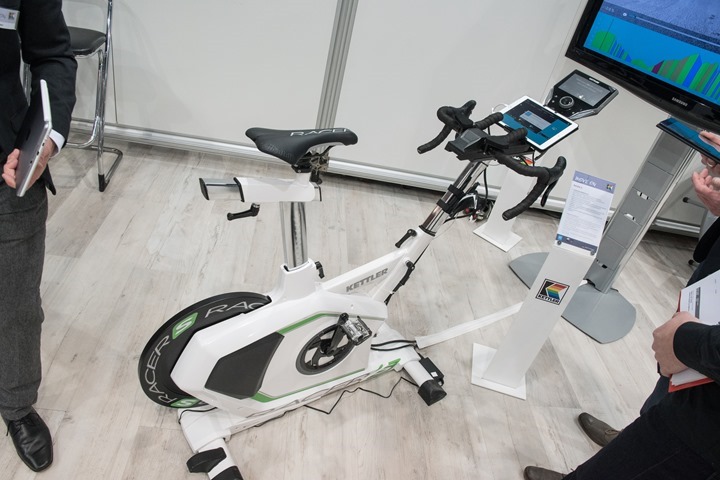
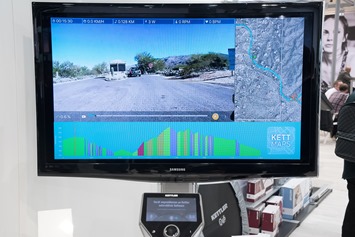
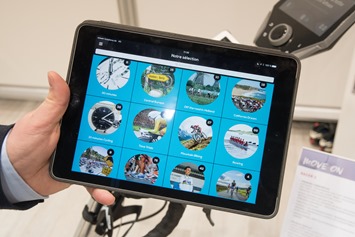
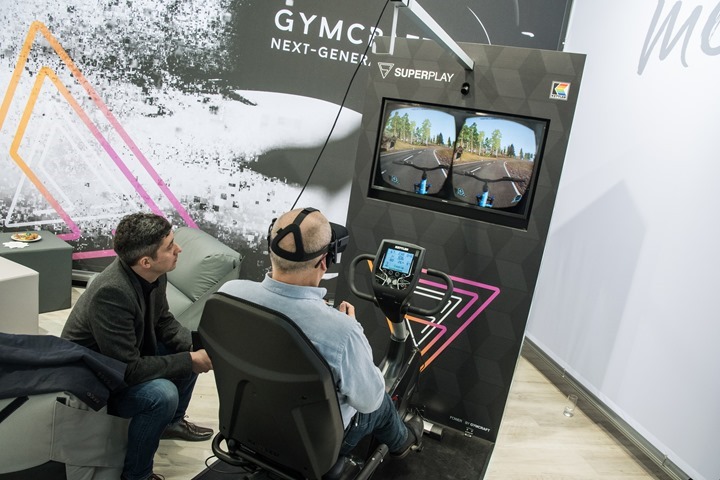

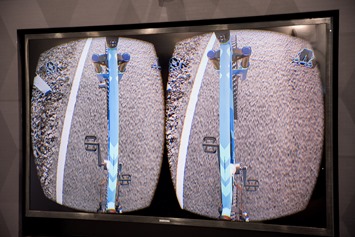
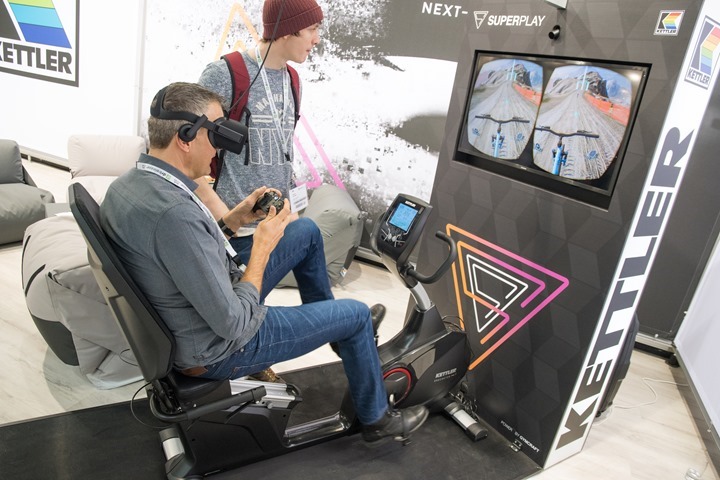

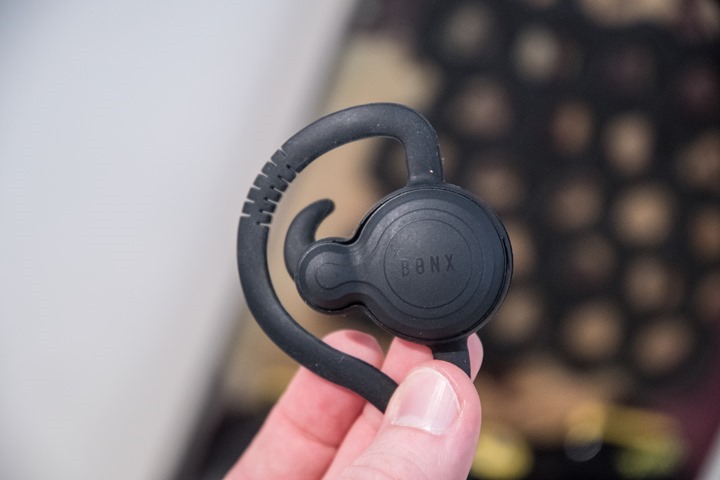

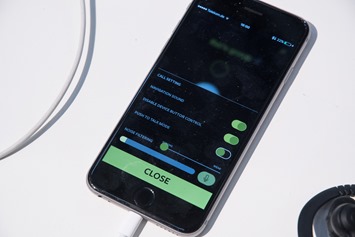
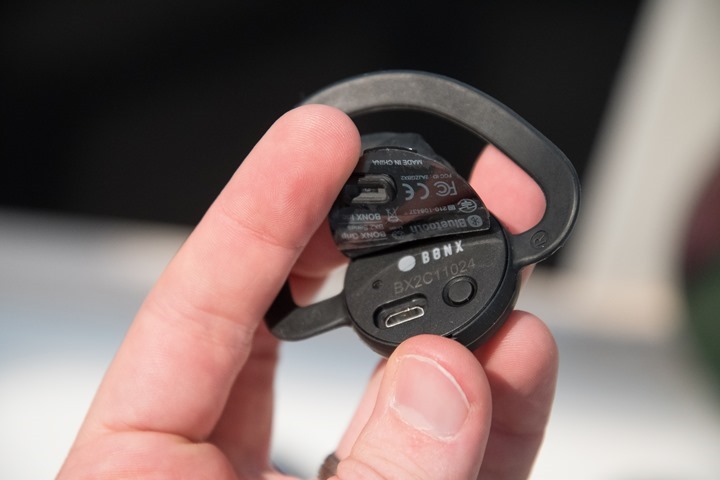
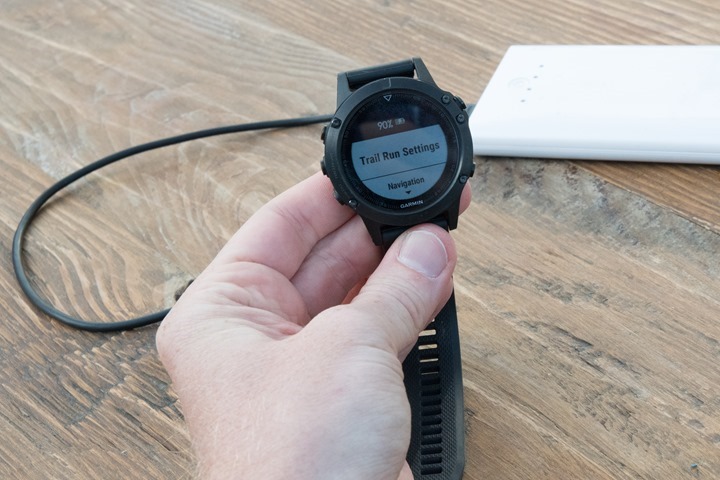
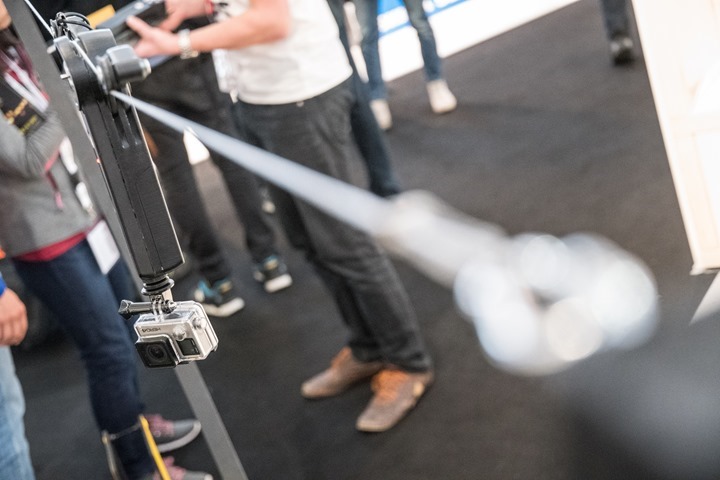
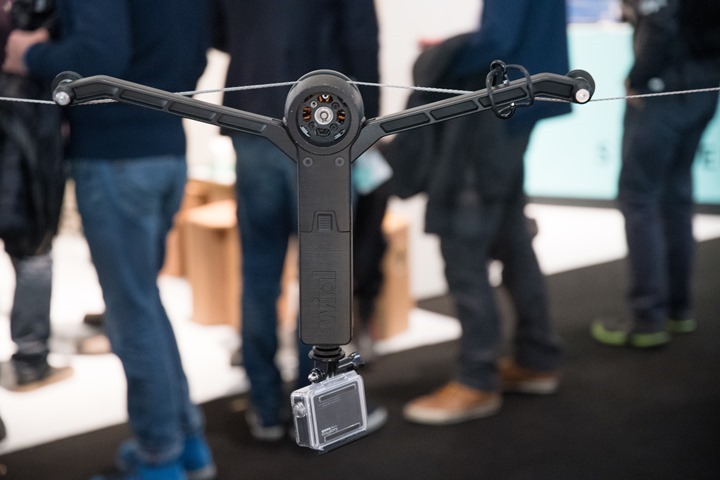
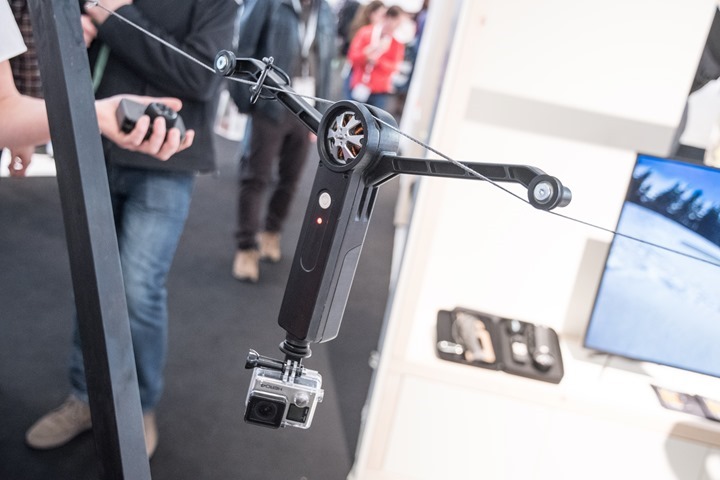
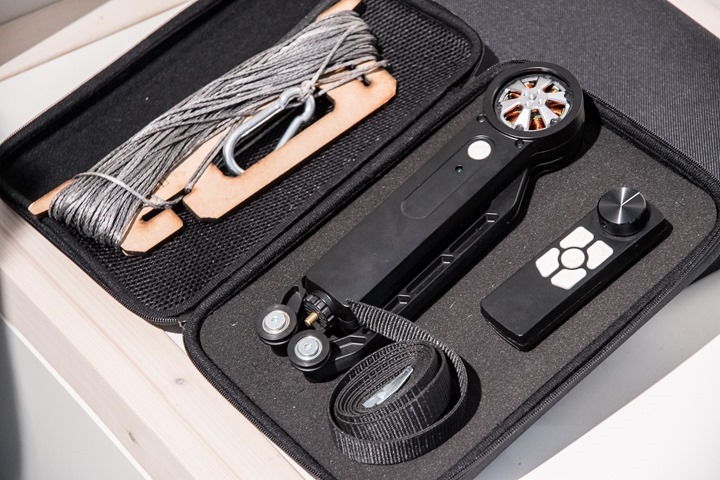






















Maybe Garmin will make a 90° version of that cable. I’ve tracked plenty of hikes with my Ambit 2S and gotten good use out of the alligator clip cable that still lets me wear the watch and continue recording while i recharge.
Why oh why would Garmin make a charge connector like that, that’s a deal breaker.
Should be able to put the connector on a clip at a right angle. In theory at least.
I get that Garmin wants to make just 1 charging cable for all and that makes sense….but at the same time, there is no reason why that plug cannot be flat (like the fenix 3) and plug into that port. At the very least, offer something like that to purchase for $10 or so for people who need it.
All I can say is Kuai better knock it out of the park. Having been a both kickstarter backer and indigogo sucker, I’m very frustrated by their constant delays and missed deadlines. While their communication has been prompt I worry about business acumen.
It looks like the Kuai earbuds are trying to deliver what the Bragi had promised a few years ago (and mostly failed to deliver from what I recall).
I wonder if these will succeed?
Thanks for the recap of ISO. Unlike many of your readers, I am not an elite endurance athlete. I’m a 45-year-old father of three who was directed to your site by Google when researching my first activity tracker two years ago (the original Vivosmart). Over time, I have enjoyed your commentary on the sports tech industry. You are detail oriented and candid.
Most notably in the last several months, your content seems increasingly focused on the elite endurance athlete and bleeding-edge/startup sports tech. The number of articles covering power meters seems significant. Yet I’ve been refreshing your page daily looking for an in-depth analysis of the Apple Watch Series 2. And though I don’t orient around the Android model, there’s been no in-depth commentary on the Samsung Gear S3 either. Is there a reason for the delayed/omitted reviews? Does your targeted audience not care about these products? I’m not a realistic user of Kettler and Bonx. The role of sports tech in my life is to help me maintain a fitness level that makes me a better husband/father/friend/consultant. It’s ok if the endurance athlete is your target. I’ll still read your website. I’ll just click refresh a little less often. Thanks for providing us this place as an informative destination.
I too am a father and definitely not a pro athlete of any sort! That being said as you likely already know this site is geared toward athleticly minded people who enjoy sports technology. While both the gear and apple watch have general sport tracking functionality of some sort that is not their primary purpose. This site typically sticks to more linearly focused products that at their core are developed to be used in the pursuit of athletic endeavors (and action cams 😉
See it in this way: There are dozens of websites that give very good in-depth reviews on mainstream products like the Apple Watch and Samsung Gear S3, but very few that put all this effort into the type of gear Ray usually reviews. We need him for that. It’s a pity there’s not more of him, because there are even more products to have a look at.
I agree. I would also like to know Ray’s view on devices such as the Samsung Gear S3 Frontier. There are plenty of user Reviews in Amazon but I really wonder how far the device goes in GPS or wrist heart rate accuracy.
For the most part, posts this time of year are largely reflective of the announcements being made. So at CES, or ISPO here, the announcements are focused on whatever the companies decide to announce. At ISPO that’s startups. At CES, it’s a wide blend, with very little of what I covered being at the pointy end of fitness, but actually more broad (i.e. TomTom’s app changes, GoPro & Polar’s updates, etc…).
In between those points was the Tour Down Under, which happens to be cycling focused. As a result, they’ll be cycling stuff.
As for the Apple Watch Series 2 review, it’s slated for either tomorrow or Friday, depending on the outcome of my conference call with the Apple Watch team later tonight. If there’s items coming out of that which require additional testing, it could delay it a day or two. Though, I suspect it’d be more of me noting their responses to my concerns in those areas.
Ultimately, I write about a wide swath of things, and kinda always have. But posts are largely driven by what’s being announced. For example, back in September we saw lots of more general devices: New Apple, Polar, Fitbit, TomTom, and Garmin stuff, as well as new GoPro stuff. All widely accessible consumer goods not so much focused on the endurance athlete. And my posts at the time reflected that.
Some, but not all, of those products make it to a review. Apple Watch Series 2 does, Garmin’s FR35 does, but other devices haven’t. Fitbit’s Charge 2 did, but the Flex 2 didn’t. TomTom’s Spark 3 will shortly, but Adventurer probably won’t. GoPro’s Hero5 Black did, but the Hero5 Session hasn’t (yet). The Polar M200 hasn’t made the cut either.
Since that point there’s been numerous power meters released, of which I’ve got three reviews I’ve simply got to write (data/pics already done). Plus other cycling stuff. I don’t believe I’ve written a single power meter post since Interbike in September.
Finally, there will be watches I don’t review. Not because they aren’t interesting, but because I simply have only so many wrists and so many hours in the day. Or, I only have so many phones. I don’t have a recent Samsung phone, so that limits things there. Yet I’ve still reviewed the Polar Android Wear M600, and the New Balance Run IQ Android Wear unit arrives tomorrow.
Ultimately, I pick and choose what I think and see there’s the most interest in. But even then it doesn’t always work out. Sometimes I mix and match things to provide balance. If I truly just followed view/comment numbers in deciding what to review. For example, I’ve yet to review the incredibly popular Edge 520 or Edge 820. Instead, I’ve ‘spent’ that time looking at smaller companies offerings and other products. And I think ultimately, folks like that balance between the big names and the little names.
Thanks for reading!
Thanks for the update! I must say that I’ve been waiting for the AW S2 and FR35 reviews for quite a while. 🙂
Awesome that you have someone on the inside of the AW2 team’s ear. We can only hope that many of the glaring omissions from the AW2 are fixed in a future version of Watch OS, because the hardware is capable of so much but in some ways delivers so little particularly in regards to fitness. Yes Strava and Runkeeper apps will be fantastic, but if the Nike app or the built in Apple Activity app were able to sync to those services it would make many existing owners very happy, not to mention the watch would suddenly be a serious contender for a lot of other would be buyers.
Pretty cool to have the camara picture on the Casio watch. Something that it is possible on the new garmin 5series on the technical side?
I’m not sure if the processing power is there. But I’m pretty sure the display colors aren’t there. Though, to be fair you don’t really notice much vibrancy in the Casio display colors with the cam anyway (they seem a bit washed out).
I really don’t understand why garmin didn’t just stick the connector on the side of the watch? There is more than enough depth and without being able to exactly measure it looks like it would fit between the two buttons on the right hand side?
That said it doesn’t look like it would be that big a deal to make a right angle connector – Even if they don’t I am sure someone enterprising will make one sooner or later.
I think the waterproofing cover makes it to large to fit on the side. And even if it would fit, the cover would be more likely to be opened accidently when on the side…
I don’t think there is a waterproofing cover. The place you mention is the location of the barometer port on the F3, probably also for the F5
Did Coros give any indication that they might bring out smart-bits that can be retrofitted to other helmets? I like to use a cheap single bluetooth earbud thingy while riding to get navigational directions (via my Android phone and either RideWithGPS or direct from Garmin Edge 820. These tend to be a bit flakey though, and the choice is a bit limited for ones that sit comfortably but don’t block out external noise. The Coros mechanism ought to be great for that, though I’ve no interest in a microphone element. Clipping on little speakers to my existing helmet straps would be ace. I guess the positioning of the straps with some helmets might not work. Having tried many helmets before settling on one that fits me nicely, I’m not keen to gamble on buying one mail order, which is why I didn’t get a Coros one originally.
@GARMIN
Is there any kind of a circuit board in the connector head sealed in? If not – so just cables – than I see ppl to open the plastic cover and mold their own 90° connector head…
takes just a little bit of a polyester putty to seal it back.
“50,000 EUR (about $53,500 USD), or roughly the cost of three Ironman race entries these days”
Now that was funny.
Haha Jason I had a giggle to but in reality, back in 2000 for an Aussie when our $ was worth 50c USD after I got back from Hawaii for practice on my new Quicken accounting program, that converts USD to AUD, the whole show for the Aussie qualifiers and the cost of everything in Hawaii, entry fee 350 USD – 700 AUD, air fares, accomodation food ect it was worth $27000 that’s not including the bike or wetsuit needed in Australia for qualifiers and other incidental gear like training and racing shoes, so Rays right, she’s an expensive sport mate
Milt, I’m not sure if everyone is chartering the private jet like you though.
Lear jet hire was cheap back then Ray. Actually the trip over it felt like a chartered flight as the Olympics were on in Oz planes were almost empty on the way back to the states I took advantage of it and me an me mate had a sleep across the 4 middle seats sensational.
The kettler news was pretty interesting
I’ve had a kettler ergometer X7 for years (and longer that an road bicycle) and used kettler world tours with it. This season i’ve switched to virtual cycling for a different view.
Kett Maps and VR platform sounds promissing and i hope by old ones is supported. The ergometer. It is from a time before trainers with controllable resistance was available at a reasonable price but still provides a good workout even trough the feel has not much to do with real riding.
I’ll probably only pay for one map service at a time, but virtualtraining allowes to set my subscription on pause when i’m not using it (like the warmer month of the year) Hope kettler will do the same without deleting user statistics
Did you have any conversation with Coros about the walkie-talkie feature?
I hope that Garmin will finally standardize on a single charging cable. Have never been a fan of the clip-style chargers. Even better would be to just use USB-C (it appears that there are some waterproof USB-C connectors on the market), but I guess that’s too much to ask for.
On USB-C, the reasons there to avoid it would mainly be the waterproofing aspect. Even past micro-USB connectors that have billed themselves as fully waterproof have eventually shown issues over time (usually 1-2 years later). With USB-C being a relatively new standard, I’d be even more hesitant on OEM’s trying to pitch a waterproof connector.
Last week I have succesfully managed to ruin the USB-C connector on my Pixel XL phone. It keeps saying there is something plugged in when it is not, and I have to fiddle with the chargers.
Based on the sensing that USB-C does, I’d say it is probably more susceptible to damage than micro-USB. In fact, reading through the forums while diagnosing, I have heard of people claiming that sweat leaves salt deposits that mess up USB-C sensing. How true that is, I do not know.
Thanks Ray, this is a great site and thanks for the update from the show. The prior comments about different groups of site readers interested me. I too am really looking forward to the Apple Watch 2 review; I was going to buy it today until I read your review was imminent. I’m trying to decide between an AW2 and a Fenix 5 as an upgrade to a Vivoactive. Different products for sure but both premium in their own way. Your site gives great reviews and I appreciate the depth of the assessments you undertake.
You probably have a lot of non-elite athletes like me who look at your site regularly as very few other sites provide anything like the same level of detail on these devices.
Keep up the great work and good luck!
When will somebody PLEASE make an Xbox controller add-on that takes the speed or watts from your bike and turns it into speed in the game? So many driving games exist and all you have to do is hack the output from your bike into the input on your controller and be done with it.
But in order to play the driving game of your choice, wouldn’t you still need to steer, brake, etc, with the game controller? That would seem difficult while you are on your bike putting down the watts.
To be fair, that’s more or less describing the game in Kettler’s demo. You pedal on their platform and it turns that into you moving on the screen.
The controller simply controls where you go, just like driving in any other video game. also, it controlled shifting, which in turn made it easier or harder to pedal (it was kinda genius).
Naw, it’s totally fine. And you can steer easily in aero position where your hands are close together already.
I keep seeing all these hacks where people and companies build entire BIKES to control speed. They aren’t nice, we already have bikes, and we already have speed coming off the bikes wirelessly anyway! Talk about a waste manufacturing resources.
Somebody could make a group of buttons that you attach to your handlebars. This gadget not only has the buttons to control the xbox, but is also has a sensor in it to sense left and right turning. Put your front wheel on something flat and smooth and you can twist your handlebars no problem, btw. And then this “head unit” also picks up speed from your ANT or bluetooth speed sensor (made by wahoo or garmin or whatever) from your rear wheel.
Then the pitch goes like this – “Want to use your bike to power your games? Just grab your bike out of the garage, slap the BIKE WIZARD on the handlebars, and buy ANY trainer available at all your local bike shops or online and boom, you are riding through Forza or GTA or Halo on your bike! Only $49.99!” Yeah, you’d need to buy a trainer, but then you can use your preexisting bikes that already fit everybody in your family and NOT use some junky thing that is sorta bike shaped but more like a recumbent, which doesn’t help your bike training whatsoever since you’re in the wrong position.
There’s already an iphone cycling game called “Over the bars” that can pick up Wahoo Kickr or Snap for speed and then you can turn the phone (strapped to your bars) to steer. So the pieces are already there, just nobody’s put the whole thing together.
Ray, what I’m saying is people/companies need to quit making entire bikes to get this done and just make a gadget that allows us to use our own bikes for speed instead. I don’t want to buy and use another bike that doesn’t fit like my own bike that’s already sitting on the trainer, sending out speed data ready for the taking. /rant
Gotchya. Now that I agree with!
You just have to go back in time 13 years and dust off an old Playstation.
link to google.com
I’m one of those who decided to buy a dedicated indoor bike (a Kettler).
I know that I’m not representative but this investment (some EUR 1500) makes absolute sense for me
– I have a silent bike
– I adjusted once the bike to my body and made space for a fan and music. I can now easily jump anytime on my indoor bike any time (e.g. during bad weather periods in summer)
– Watt based Training is easy to do as everything is integrated in the indoor bike and software
– online races with other (Kettler) bikes delivers consistent results
There is a market for both audiences and it is quite interesting for me to read news from the “indoor bike world” too.
Thanks!
I am interested in you comparing the Kettler vs high end trainer (Tacx Neo, Elite, Whaoo) as it relates to noise, feel and level of simulation.
Thanks!
I need the KuaiFit Sport Headphones in my life! Any hint on price?
Preorder here for $169
link to igg.me
That Wiral cable cam system looks cool. Did you see it in action and was the camera suitably stable when moving (i.e. not wobbling)? Also, any idea how steep the cable slope can be?
I’m also looking forward to that Staaker post, even though I’m a bit skeptical about single-purpose drones (not to mention the price…) when autonomous modes are now the norm in most regular ones.
It was stable, though you got a bit of a bump when you accelerated – one of the reasons they recommended adding a gimbal to it.
I don’t know how steep it could go. Staaker post coming up in a minute or two. Was just waiting on FCP and finally YouTube to finish processing. #4KPains
Any news as to exactly when they will release the Fenix 5? I know its the end of the quarter but was looking if they gave you a specific date.
Depends a bit on where you live, US gets it first, then abroad. Usually for Europe the order is UK > bigger non-UK european countries > smaller countries. And the first batch will be smaller numbers, after initial roll out, they will ramp up production and distribution. Small start so they can catch hardware bugs before they made several tens of thousands malfunctioning units.
As for the Fenix 3 that was “available” for me in the Netherlands at around the last week of march, and since I preordered it, I got one of the first units in my country. (not counting ppl that may have imported it), widespread availability was around late may.
So if this will also apply for the Fenix 5, I don’t know, but it kinda feels like it will.
Right now everything remains on track for March. You’ll likely see it trickle out in small batches in early March, and then more broadly towards the end. While there are always exceptions, if one didn’t pre-order this, I can’t imagine you’ll see it before April, with May being more likely for all SKU availability.
As Patrick noted, Garmin tends to slow-roll for the first 2-4 weeks. That’s even more so the case here because there are three different core hardware SKU’s, and like a dozen models all-in. Garmin has already stated previously that they’ll focus on the most popular models first, and then expand out. Unfortunately we don’t know which ones are getting priority at this point. So some SKU’s likely won’t even get made in the first few weeks.
Finally, as for global distribution, typically speaking Garmin actually tends to send small batches of devices both to the US and Europe within a few days of each other. But the distribution in Europe is far less ‘organized’ than in the US, so it ends up being a bit more random and usually pretty thin. On the bright side that means every once in a while a small shop in Europe gets them and has an extra one. Whereas in the US most are handled online.
Thanks for the extra info!
While I get the general gist of what it means, what does SKU stand for?
Hopefully I can get an on-hands look with the Fenix 5 myself tomorrow with big bike & hike convention at Utrecht tomorrow. Any pointers on what to look for or to try out that really make it different from the Fenix 3 are appreciated. (I’m going to assume I’ll have little time with a device if it’s there)
SKU = Stock Keeping Unit
Basically, each model of the Fenix 5 has a different/unique SKU. In total, as of now there are 15 SKU’s of the Fenix 5 series in total. I’m sure over time we’ll see that grow (the Fenix3 started off as 2-3 and ended up at over a dozen).
A while back they sent over some background material that listed the SKU’s, so here they are for fun. Note those numbers are unique within the Garmin system. Everything they sell has a unique SKU number, and thus it’s the only true way to ensure you’ve got the exact model you think you want.
Fenix 5S
White with Carrara white band – 010-01685-00
Silver with turquoise band – 010-01685-01
Silver with black band – 010-01685-02
Fenix 5S Sapphire
Black with black band – 010-01685-10
Champagne with gray suede band – 010-01685-12
Champagne with metal band – 010-01685-14
Fenix 5
Slate gray with black band – 010-01688-00
Silver with granite blue band – 010-01688-01
Slate gray with amp yellow band – 010-01688-02
Performer bundle > slate gray with black band – 010-01688-30
Fenix 5 Sapphire
Black with black band – 010-01688-10
Slate gray with metal band – 010-01688-20
Performer bundle > black with black band – 010-01688-31
Fenix 5X Sapphire
Slate gray with black band – 010-01733-00
Slate gray with metal band – 010-01733-04
Also/finally, there are 21 different band SKU’s as well – for buying extra/accessory bands for the Fenix 5.
As for differentiating to the Fenix3 from a hands-on standpoint, you’ll notice the widgets and general UI are different, most notably also into some of the recovery/training features.
49€ for an additional rubber band? An no fabric wrist strap with quick release system to wear the device in winter etc. over a jacket…
Many of the SKU’s actually come with the additional rubber band included free. But yeah, beyond that they are kinda expensive.
I always thought that a battery backup puck could slide under the watch and provide an extended range while being worn.
With the fenix 5 design it’s possible to make a device that latches onto the watch band clasps and provides a longer watch band at the same time l.
there has been any comment from ISPO by garmin on the release of the firmware update for FENIX 3HR for the issues with altimeter/barometer? my unit, at the moment, started working properly (without me doing anything) but I would like to add some more certainty to the status of the official solution from garmin
Lord knows the Garmin Fenix is fat enough to take the cable at the SIDE! Why not put the hole there, then you can have the battery pack and cable on your forearm or upper arm, supposing you’re an ultra runner.
I’m waiting for my Kuai via KS. Got my two Bonx so planning to try them out on my next ski trip in a couple of weeks. Hope the battery can really last the full day!
Hi, Ray!
Are there any news on KuaiFit Sport Headphones?
Are they shipping yet?
Any information would be of great help.
Goran
I haven’t heard anything since I wrote those post. 🙁
Ray, any chance you will review the Kuai headphones? It seems that they’ve started production this week fwiw. Thanks!
I likely will once out of production (meaning, shipping). Though, we’ve seen them be close/in production a few times before over the years, so, I’m kinda waiting to get a legit final unit in my hands.
Can’t wait to get the waterproof swim version. I have searched in vain to get an effective real time swim HR monitor. So far the best I’ve got is the Finis AquaPulse which I managed to snag at a discount because it apparently is discontinued. It actually sort of works and gives regular audio updates of your pulse by the earlobe optical HRM. But it is a little awkward and kludgy to set up, is a little uncomfortable fitting tightly against the side of your head under the swim cap, and sometimes doesn’t track HR consistently. So I’d pay the extra for the Kuai if it worked consistently and easily and it was as simple as stick it in your ears and go.
They are available on amazon for shipping immediately. Any thoughts on them Ray?
I queried them, and they said the waterproof version would ship February. Presumably the current shipping model is the “sweatproof”.